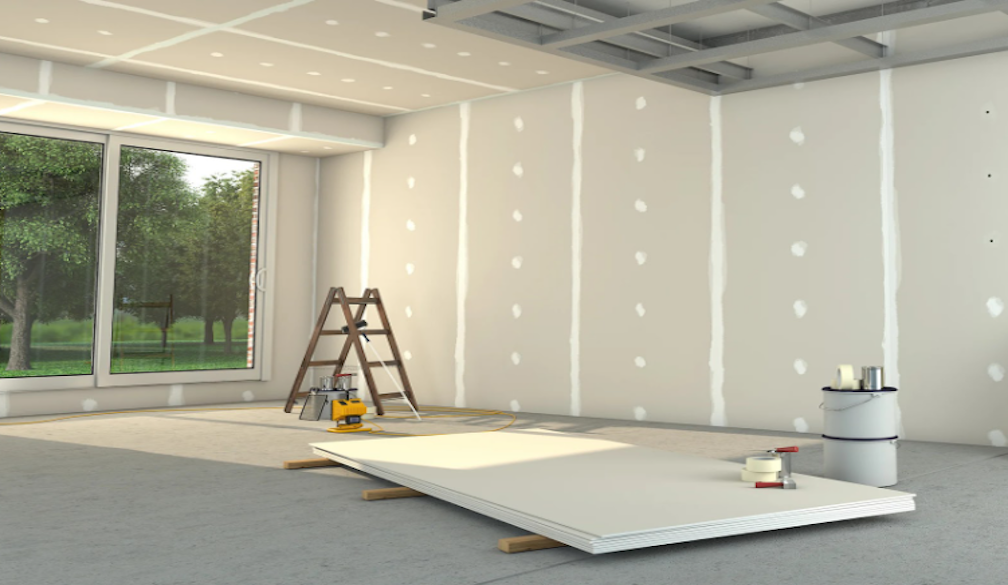Plasterboarding For Walls And Ceiling: What Are The Benefits?

Plasterboard is a popular option for decorating walls and ceilings in Australia for quite a few reasons. This material is lightweight, relatively easy to install, especially if you contact professional plasterboarding or plastering contractors, and guarantees great results in terms of interior design.
It can be used for residential buildings and homes, and many people prefer to install plasterboard on the walls and even ceilings in different rooms. This article explores what are the pros and cons of this method, and in what rooms it's reasonable to apply plasterboarding.
Understanding Plasterboard
Plasterboard, also known as drywall or gypsum board, is a panel made from gypsum plaster pressed between thick sheets of paper. Builders often use it to construct interior walls and ceilings. Plasterboard can be of various types, like these:
- standard;
- fire-resistant;
- moisture-resistant;
- soundproof.
Standard boards suit most indoor spaces, while fire-resistant and moisture-resistant types are used in areas with specific safety or humidity concerns. If you have noise neighbours, you might want to consider soundproof board.
Plasterboard is mainly used indoors. It's not recommended for outdoor application, as it's too flimsy of a material to resist external weather conditions. Indoors, it provides a smooth surface for paint, wallpaper, or other decoration.
In Australia, plasterboard is popular because it's affordable and easy to install. It's typically applied to walls and even ceilings because of its lightweight structure and versatility. In terms of design, you can use plasterboard for various surfaces, including smooth or even custom designs. Combine this versatility with affordability and ability to customise the boards, and you'll understand why people prefer this solution.
In What Rooms To Use Plasterboard?
Plasterboard is ideal for a wide range of rooms in residential and commercial buildings. It's perfect for living rooms and bedrooms. These rooms benefit from plasterboard because it provides smooth surfaces that are easy to decorate. Plasterboard adapts to different interior styles, and you can make adjustments in the future. It's also lightweight, so that installation is simpler in these spaces.
Many people wonder about bathrooms and kitchens, especially if they want to create a similar aesthetic in all rooms. However, bathrooms and ceilings often have excess moisture, humidity, and the walls can be exposed to vapour in the kitchen. In this case, you can simply opt for moisture-resistant options that prevent damage from steam and dampness.
Simply put, plasterboar is ideal for various rooms, even the ones with increased humidity. However, you must also consider the pros and cons of this option.
The Benefits And Drawbacks Of Plasterboarding
So, like any other solution, plasetrboarding has advantages and disadvantages. Let's start with the positive aspects:
- Plasterboard guarantees an ideal surface that's easy to paint or decorate. It suits various design preferences.
- It helps with soundproofing, which is valuable in rooms like bedrooms or living spaces.
- Plasterboard installation is generally quicker and less expensive than other wall materials.
- Fire-resistant plasterboard increases safety in homes and buildings.
- It's lightweight, so it's easier to install on ceilings without much difficulty.
Now, compare the list of benefits to the drawbacks:
- Standard plasterboard an't handle moisture well, so use moisture-proof board or a different method.
- It can crack or dent easily if exposed to impact, although the repair isn't too difficult or expensive.
- While it resists fire, plasterboard can suffer structural damage when exposed to heat over time.
- Plasterboard lacks durability compared to brick or concrete, so it might not be ideal in a kids room or for houses with active pets.
- It may not provide good insulation, which means your electricity bills will increase so that you keep yourself warm during cold periods.
Overall, every person should consider the peculiarities of the room to select the right type of board. In that case, the work will last longer, and you can achieve any preferred interior design.
